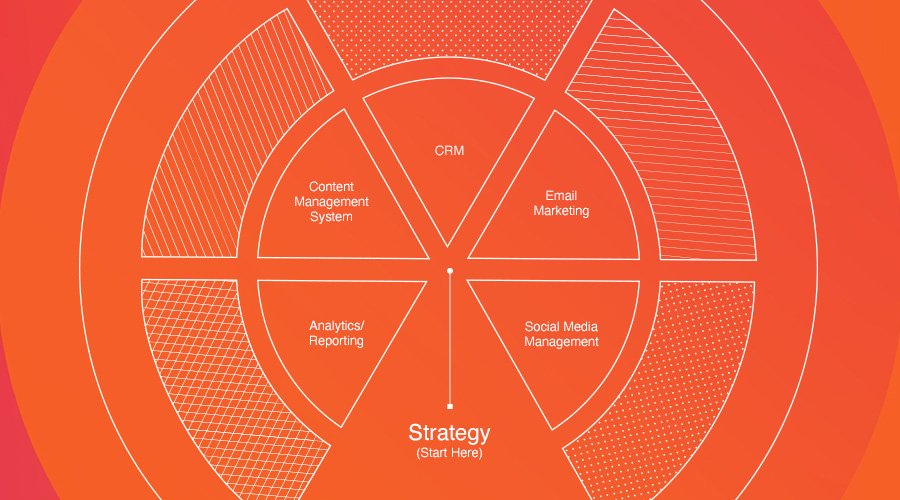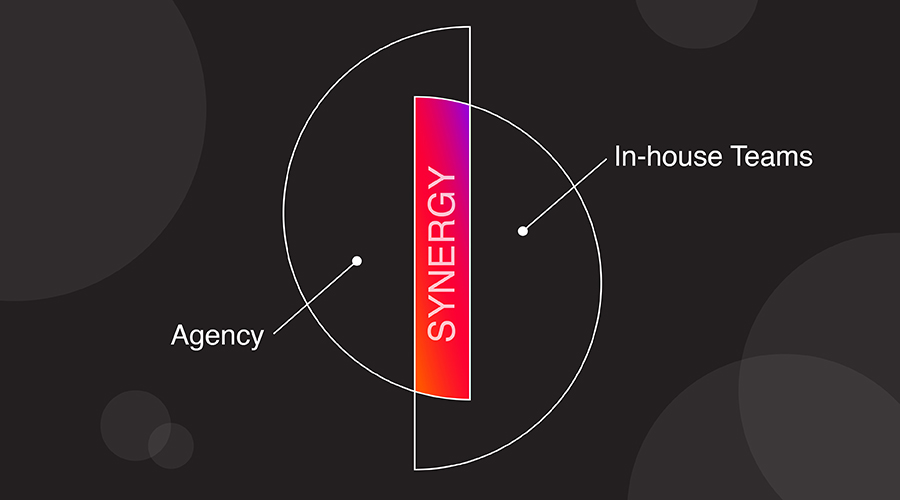Today’s marketers have over 14,000 tools at their fingertips. That’s a huge number—enough to make anyone’s head spin! So, how do you figure out which ones you actually need?
The digital marketing world is changing fast, and having the right tools is key. But “right” doesn’t always mean “more.” Sometimes, more tools just mean more headaches.
To make the most of your marketing tech stack, the secret is “right-sizing.” This means making sure the tools you’re using fit your business’s needs, goals and budget.
Right Size Your Tech Stack
A good marketing tech stack should make your life easier, help you work more efficiently, and give you better results. But what’s “right” for one company might not be right for another.
A typical stack includes a mix of tools that help you connect with your audience, personalize your messaging, automate redundant tasks and track performance. Your stack might include a CRM like Salesforce, an email marketing tool like Eloqua, a social media management platform like Sprout Social, and analytics software like Google Analytics. Together, these tools give you a clear picture of your marketing efforts and customer interactions.
Related Content: Five Considerations for Choosing a Marketing Automation Software
But your stack doesn’t have to be big, fancy or expensive—especially if you’re running a small or mid-sized business. For instance, a mid-sized company might just need tools for managing customers — a customer relationship management (CRM) platform, email marketing and analytics. Bigger companies might go all out with CRM integrations, content management, email, social media, analytics and more. No matter your size, start with your strategy and build your tech stack from there.
Ask yourself these questions about the tools you’re using now (and any new ones you’re thinking about adding):
- Does this tool help us meet our marketing goals?
- Will it help us reach our audience more efficiently?
- Can it integrate smoothly with our existing tools?
- Can it grow with our business?
If your current tools aren’t pulling their weight, think about swapping them out for another option. And when you’re thinking about adding new ones, remember you don’t need a tool for every marketing channel out there. For example, if you’re not yet producing a large enough volume of content to justify a content management system (CMS), it doesn’t have to be a part of your stack right now.
Right sizing your tech stack might mean fewer, but more powerful, tools that give you a better return on investment instead of a larger, less effective mix.
Manage Your Tech Stack
Each category of marketing technology offers a variety of tools for every level of user and need. But adding a new technology to your stack isn’t a “set it and forget it” activity, no matter how powerful the tool is.
Every technology in your stack should have an assigned platform owner — someone who keeps up with updates, lets the team know about new features, down time and best practices. This person should also document how the tool is used, what data it handles and how it connects with other systems.
Your platform owners should also conduct regular reviews of your marketing tech to make sure the tools continue to meet your needs. This can include gathering feedback from team members to gauge each tool’s ease of use and whether they’re delivering results, and then making recommendations for upgrades or new tools.
It’s also important for your platform owner to have a good relationship with your vendor rep. Your rep should understand your company’s goals and work with your platform owner to make sure the technology continues to meet your needs.
Each vendor in your tech stack should also have a documented data privacy policy. Your rep should be able to provide this for you. Make sure your compliance team or DPO is aware of the vendor, their data privacy policy and how data is being used before you add the solution to your tech stack.
Optimize Your Tech Stack
Sometimes, marketing teams invest in tech platforms but never use them to their full potential. Many tools come with extra features that can make your team even more effective. These can open up new opportunities for your organization.
Almost every software is adding AI components. If these components don’t come with additional cost, consider how you can test and potentially implement the functionality. Read the data privacy policy and the terms of use and then engage your team to determine whether the added capabilities from AI will benefit your work.
Continuous training is also crucial to staying current with the latest features and best practices. Your product owners and team members using the platforms should invest in regular training sessions, webinars and certifications to deepen their understanding of the tools they use. This will enable them to fully utilize advanced functionalities like automation, personalization and analytics. Your vendor rep should also be a resource for continued learning about individual platforms.
Collaboration with IT, sales and customer service teams is vital for maximizing the benefits of your marketing technologies. A cross-functional approach makes sure your tech stack aligns with overall business goals and that insights from different departments are used to improve the customer experience.
A well-built tech stack gives marketers a competitive edge. Whether you’re just starting to build your tech stack or want to make better use of the tools you already have, we can help. Let’s chat about how we can make your marketing technologies work for your business!




